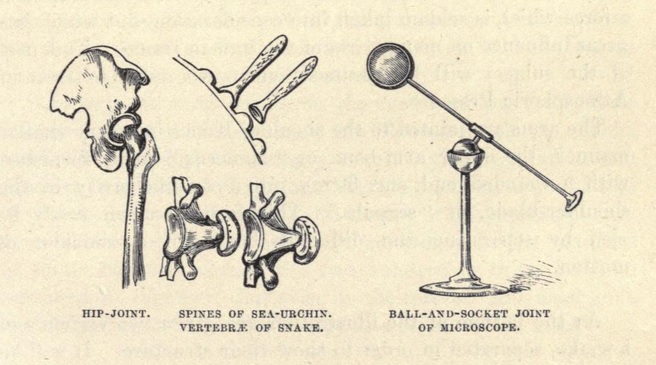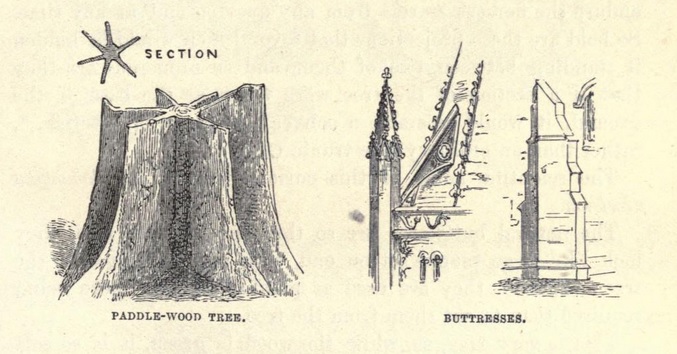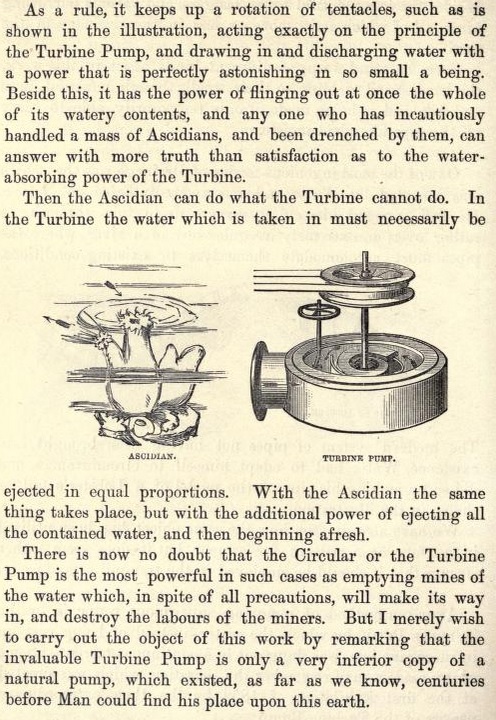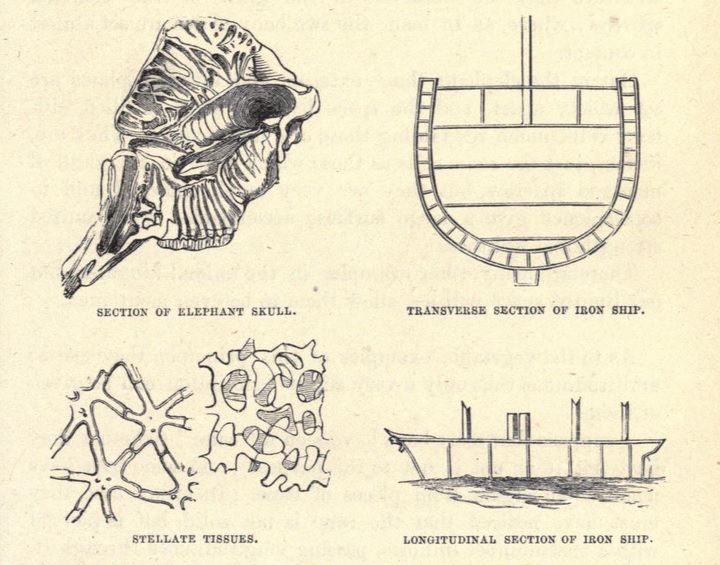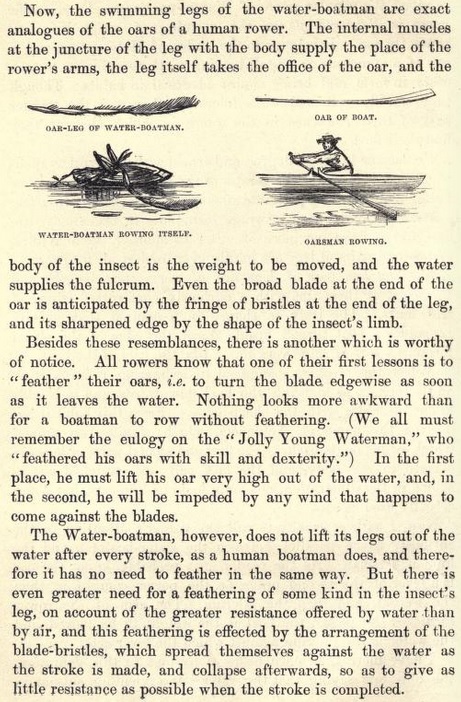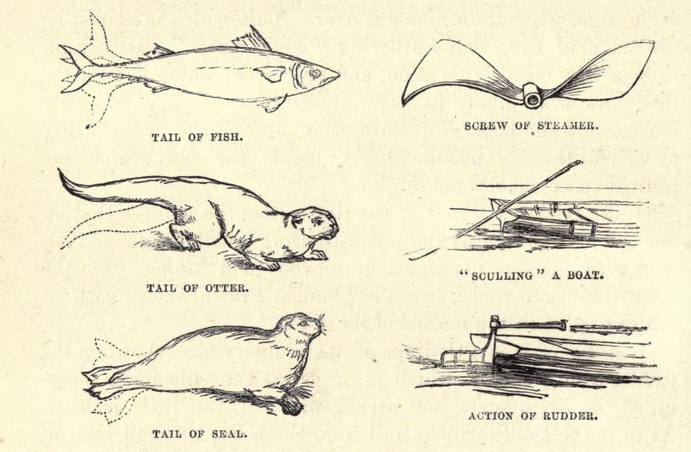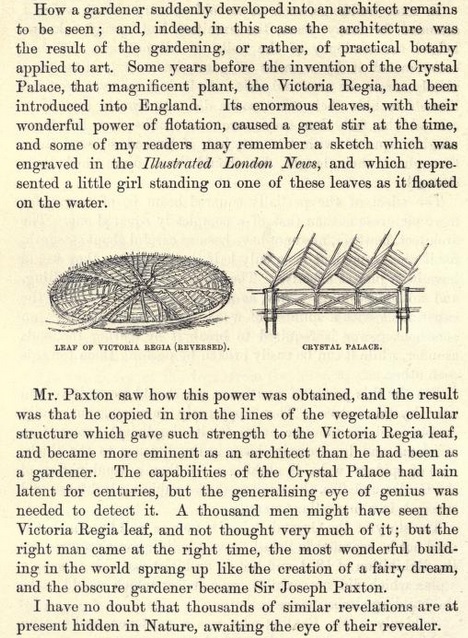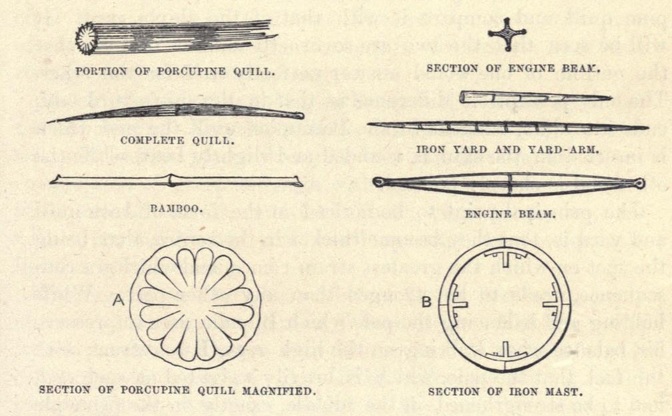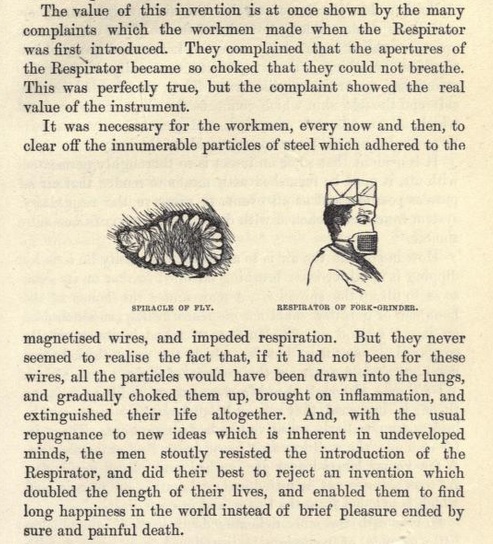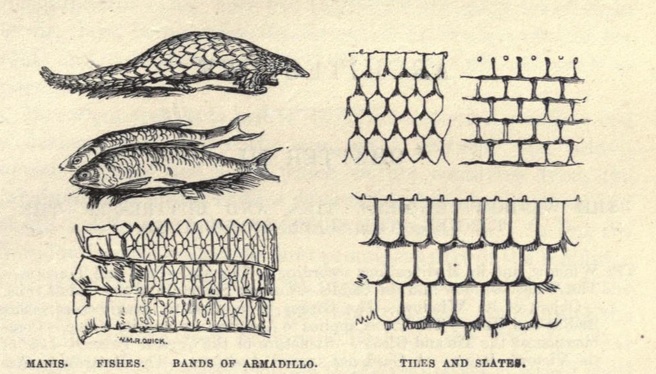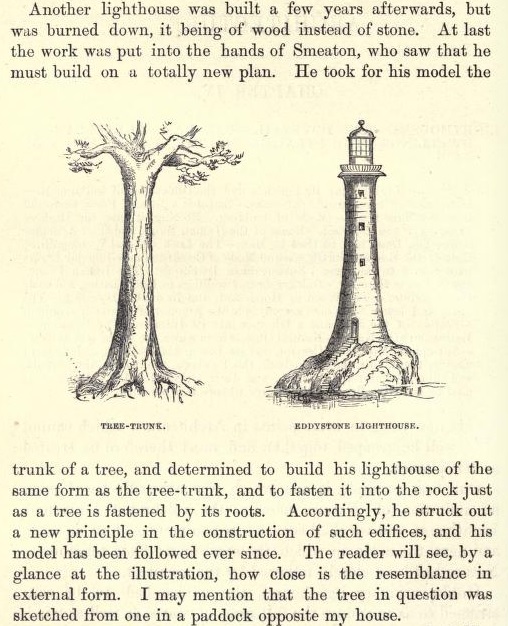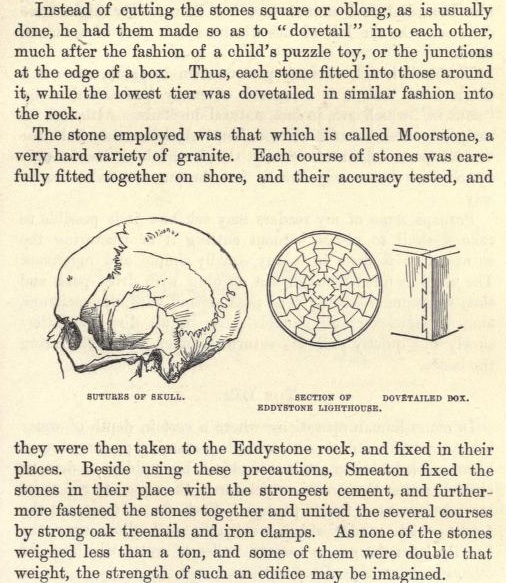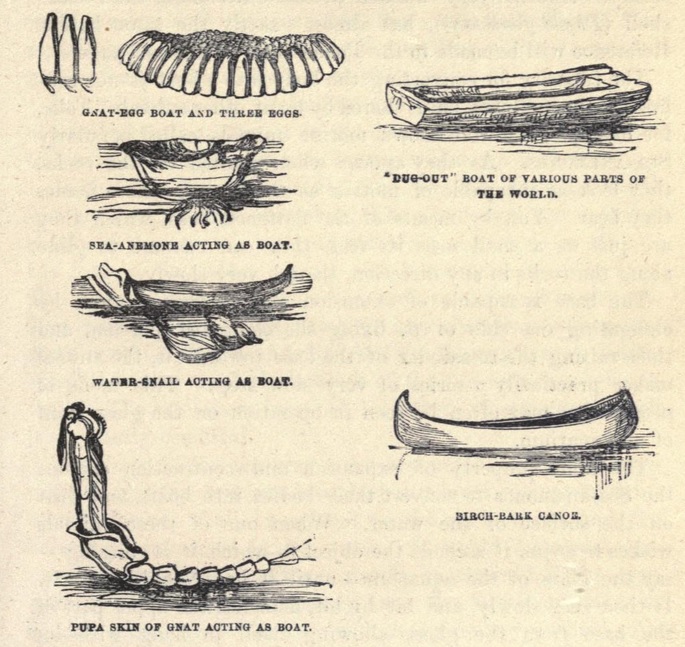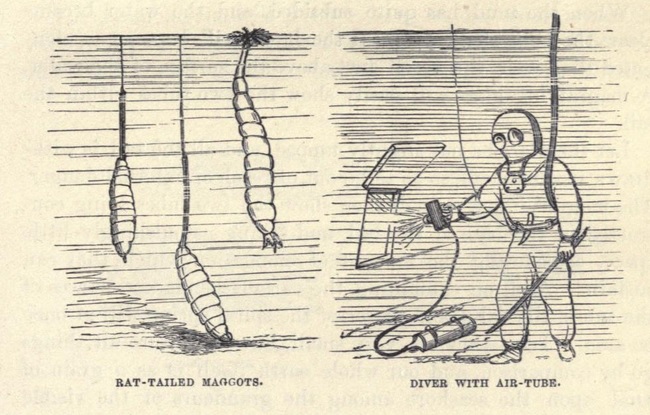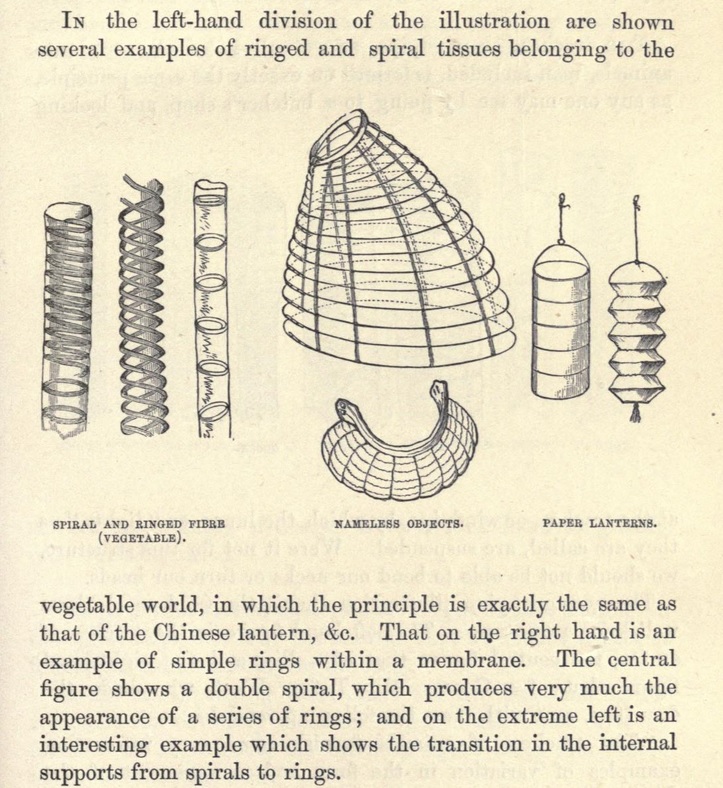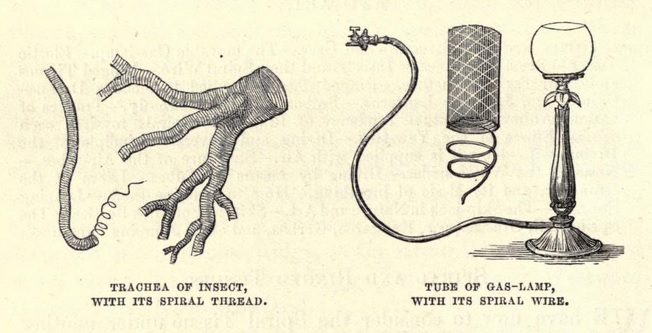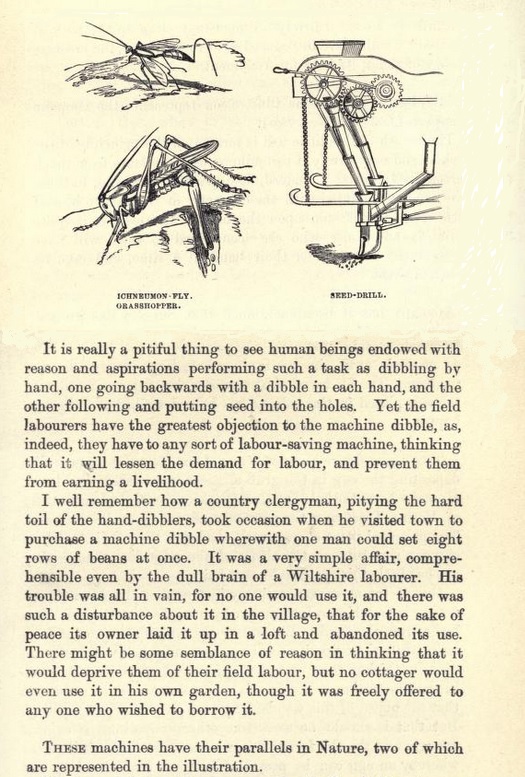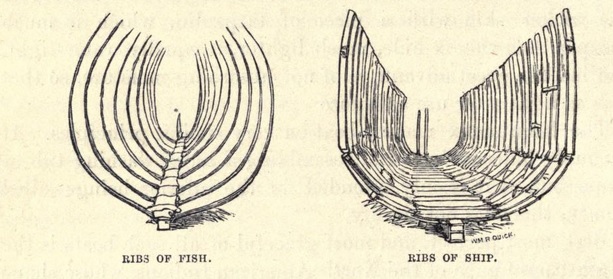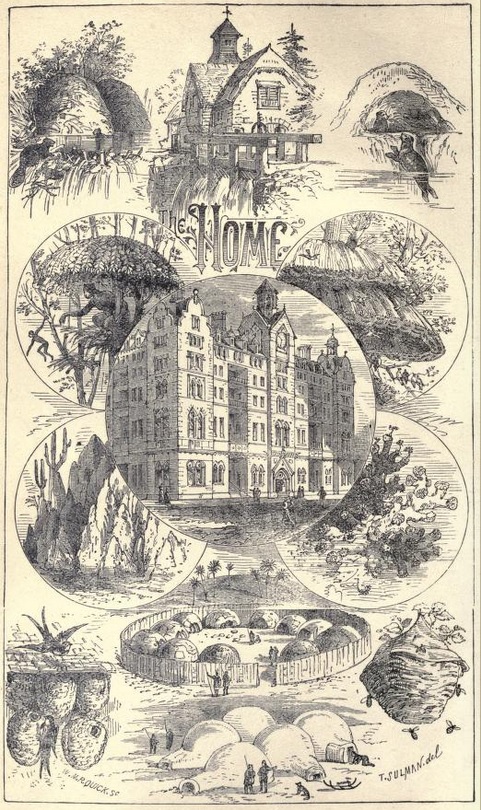

"Biologically-Inspired Engineering" is a popular field these days, as designers finally realise that Nature has kindly spent several gigayears testing all manner of technology.
But perhaps "finally" is not the right word here. Every generation of engineers has had its prophets and evangelists of the "natural" style. In the second half of the 1800s the latter included, as is only fit, a clergyman: the zoölogist and Anglican priest J. G. Wood.
Original research was not Rev. Wood's forte, but as a writer of popular science and shaper of popular culture he has had few equals. His natural-history books were best-sellers; his lectures for adults filled the auditoriums; his Boys' Own Magazine gave its name to an entire genre of children's literature. Wood was very much a man of its time, embodying many of its virtues but also some of its grievous faults: his writings have their share of racism, sexism, classism, and (he was a parson-naturalist, after all) prudery.
It is exactly because Rev. Wood was such a representative Victorian that his 1877 book Nature's Teachings is so fascinating: it presents a counterpoint to the modern stereotype of the Nineteenth Century as an age when Dark Satanic Mills chewed up the countryside while robber barons and buffalo hunters heedlessly looted the planet. Technology, for Wood and many of his contemporaries, was an intrinsic part of Nature, and Nature the ultimate inspiration of all technology. It is interesting that, while later "biotechnics" advocates have tended to contrast biomorphic shapes and patterns with the harsh linearity of standard Western machines, Wood does not usually distinguish between, say, an entangled network of lianas in the jungle and the neat catenary of a suspension bridge's cables: both illustrate the same basic physical principles. Nevertheless, as a general rule, he deems the human designs less efficient. Rev. Wood lived late enough in the century to keep religion out of the foreground of his text, but one assumes that he credited the superiority of Nature's designs to a superior Designer. The decline of bio-inspired engineering in the early Twentieth Century and the rise of Modernist/Futurist rhetoric about the "inhuman glory" of the machine in explicit opposition to Nature is at least correlated with the triumph of materialist philosophy in the same period.
Selected illustrations from Nature's Teachings: Human Invention Anticipated by Nature by the late Rev. J. G. Wood, M. A., F. L. S., Etc., Author of Man and Beast Here and Hereafter, etc. New and Revised Edition [London: Glaisher, 1907]
